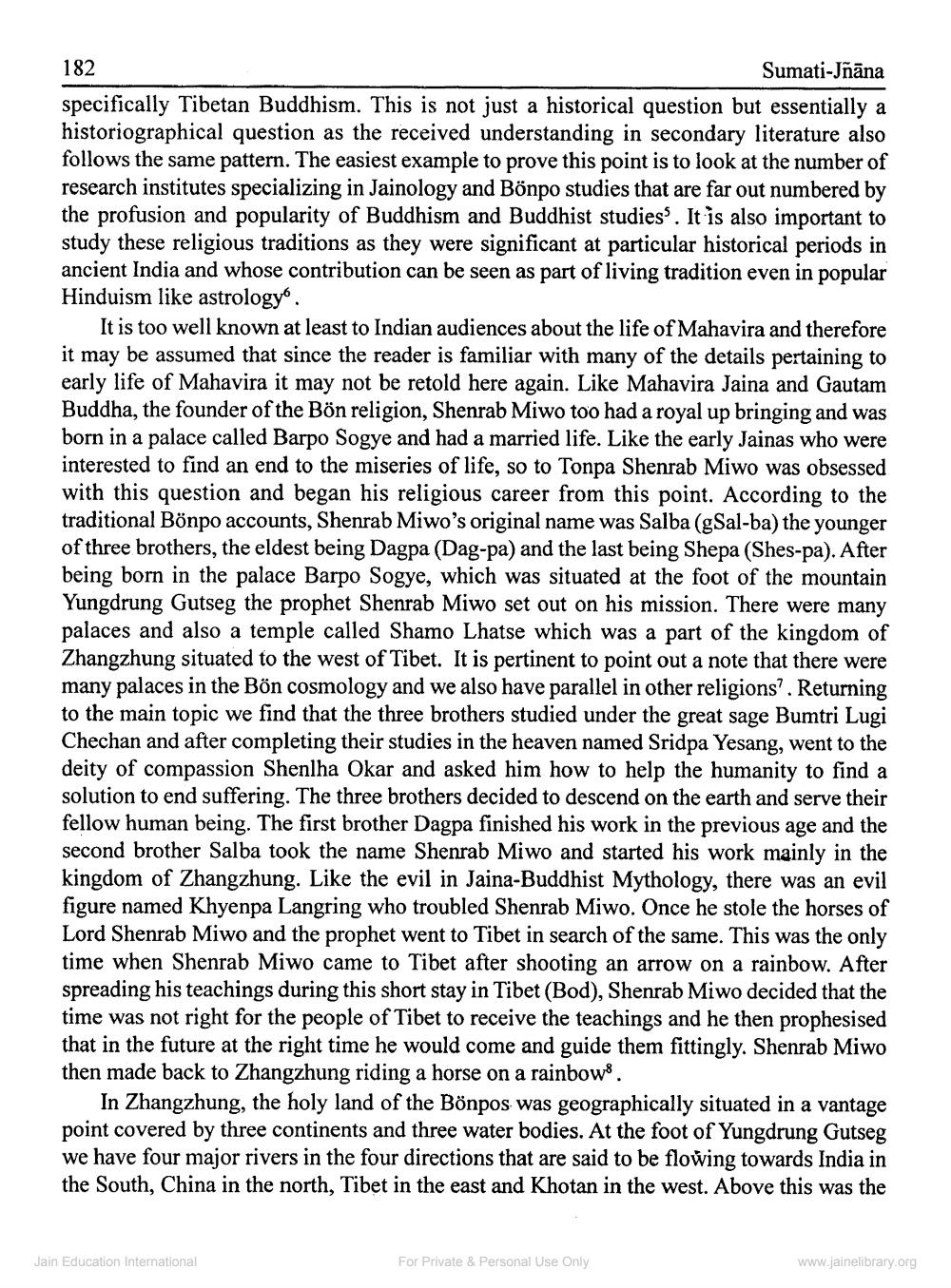________________
182
Sumati-Jõāna specifically Tibetan Buddhism. This is not just a historical question but essentially a historiographical question as the received understanding in secondary literature also follows the same pattern. The easiest example to prove this point is to look at the number of research institutes specializing in Jainology and Bönpo studies that are far out numbered by the profusion and popularity of Buddhism and Buddhist studies. It is also important to study these religious traditions as they were significant at particular historical periods in ancient India and whose contribution can be seen as part of living tradition even in popular Hinduism like astrology.
It is too well known at least to Indian audiences about the life of Mahavira and therefore it may be assumed that since the reader is familiar with many of the details pertaining to early life of Mahavira it may not be retold here again. Like Mahavira Jaina and Gautam Buddha, the founder of the Bön religion, Shenrab Miwo too had a royal up bringing and was born in a palace called Barpo Sogye and had a married life. Like the early Jainas who were interested to find an end to the miseries of life, so to Tonpa Shenrab Miwo was obsessed with this question and began his religious career from this point. According to the traditional Bönpo accounts, Shenrab Miwo's original name was Salba (gSal-ba) the younger of three brothers, the eldest being Dagpa (Dag-pa) and the last being Shepa (Shes-pa). After being born in the palace Barpo Sogye, which was situated at the foot of the mountain Yungdrung Gutseg the prophet Shenrab Miwo set out on his mission. There were many palaces and also a temple called Shamo Lhatse which was a part of the kingdom of Zhangzhung situated to the west of Tibet. It is pertinent to point out a note that there were many palaces in the Bön cosmology and we also have parallel in other religions?. Returning to the main topic we find that the three brothers studied under the great sage Bumtri Lugi Chechan and after completing their studies in the heaven named Sridpa Yesang, went to the deity of compassion Shenlha Okar and asked him how to help the humanity to find a solution to end suffering. The three brothers decided to descend on the earth and serve their fellow human being. The first brother Dagpa finished his work in the previous age and the second brother Salba took the name Shenrab Miwo and started his work mainly in the kingdom of Zhangzhung. Like the evil in Jaina-Buddhist Mythology, there was an evil figure named Khyenpa Langring who troubled Shenrab Miwo. Once he stole the horses of Lord Shenrab Miwo and the prophet went to Tibet in search of the same. This was the only time when Shenrab Miwo came to Tibet after shooting an arrow on a rainbow. After spreading his teachings during this short stay in Tibet (Bod), Shenrab Miwo decided that the time was not right for the people of Tibet to receive the teachings and he then prophesised that in the future at the right time he would come and guide them fittingly. Shenrab Miwo then made back to Zhangzhung riding a horse on a rainbows.
In Zhangzhung, the holy land of the Bönpos was geographically situated in a vantage point covered by three continents and three water bodies. At the foot of Yungdrung Gutseg we have four major rivers in the four directions that are said to be flowing towards India in the South, China in the north, Tibet in the east and Khotan in the west. Above this was the
Jain Education International
For Private & Personal Use Only
www.jainelibrary.org




